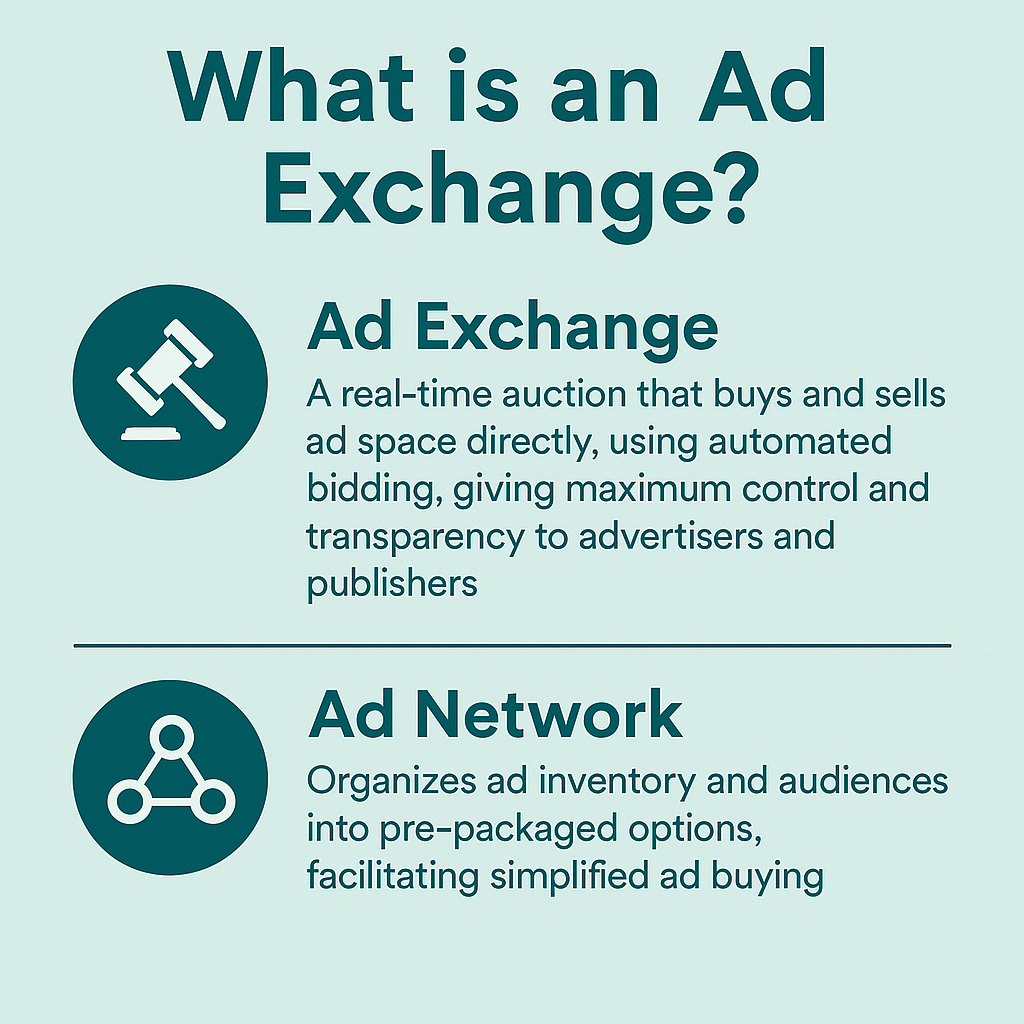If you’re buying or selling digital advertising today, chances are you’ve heard of ad exchanges. But what exactly are they, and why do they matter for businesses looking to reach local audiences?

The Basics: What Is an Ad Exchange?
At its core, an ad exchange is a technology platform that creates a virtual marketplace where advertisers and publishers can buy and sell digital ad space in real time. Think of it as a high-speed auction—when a user visits a website or app, the exchange instantly determines which ad is the best fit for that person based on data like interests, demographics, or browsing behavior.
This all happens in milliseconds, ensuring that ads are timely, targeted, and relevant. For advertisers, it’s a way to get messages in front of the right people. For publishers, it’s a way to maximize revenue from their digital inventory.
How Ad Exchanges Work
Ad exchanges connect with Demand-Side Platforms (DSPs), which advertisers use to buy ad placements automatically. Here’s the simplified flow:
- A user visits a website or app.
- The ad exchange triggers an auction for the available ad space.
- DSPs representing advertisers place real-time bids based on targeting data.
- The winning ad gets shown to the user—instantly.
This process is the foundation of programmatic advertising, now the most widely adopted method for digital media buying worldwide.
Ad Exchange vs. Ad Network
The terms are often used interchangeably, but they serve different purposes in the digital advertising Ad Exchange vs. Ad Network
The terms are sometimes confused, but they represent different approaches:
- Ad Exchange: A real-time marketplace where advertisers bid for digital ad space with visibility into placements, pricing, and targeting. Exchanges provide the speed and precision that drive modern programmatic advertising.
- Ad Network: Originally developed to make digital buying simpler, networks organize inventory and audiences into ready-to-buy packages. This helps advertisers quickly reach specific types of consumers without managing each placement individually.
At Enradius, we’ve taken the best of both worlds. Local Ad Networks pair the sophistication of exchanges with the focus of curated local inventory—helping brands reach audiences in their communities with both scale and precision.
Open Exchange vs. Private Marketplace
Ad exchanges come in two main flavors:
- Open Exchange: Anyone can bid. It’s a level playing field where small disruptors can compete alongside big brands.
- Private Marketplace (PMP): Invitation-only. This allows advertisers access to premium placements with less competition but requires stronger budgets and relationships.
Many advertisers use a mix of both for flexibility and reach.
Why This Matters for Local Advertising
At Enradius, we’ve taken the power of programmatic ad exchanges and combined it with Local Ad Networks—state-based marketplaces that make it easier for advertisers to reach audiences where they live, work, and shop.
With the Maryland Ad Network, Virginia Ad Network, North Carolina Ad Network, and others, we aggregate local media inventory so that advertisers can plug into high-quality placements while still benefiting from programmatic speed and targeting.
For example:
- A local bank can target households within a 12-mile radius of its branches.
- A tourism bureau can reach travelers 150+ miles away who are more likely to book overnight stays.
- A retailer can retarget customers who recently visited its store with offers that drive repeat visits.
By combining the scale and automation of ad exchanges with the trusted inventory of local publishers, we give advertisers the best of both worlds—programmatic efficiency with hometown relevance.
The Takeaway
Ad exchanges may sound technical, but they’re really just modern marketplaces that make advertising smarter, faster, and more efficient. And when paired with Local Ad Networks, they become a powerful tool for businesses of any size to connect with their communities.
At Enradius, our mission is simple: Mapping Success, Driving Results.


